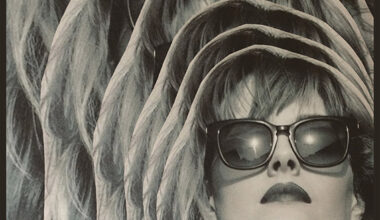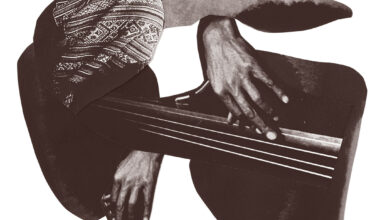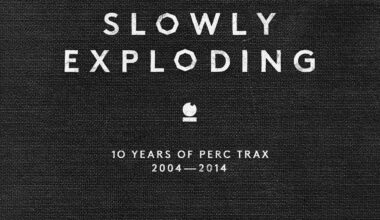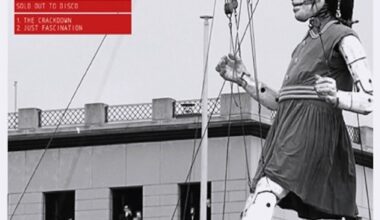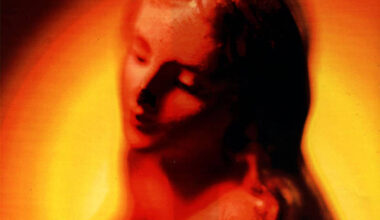Earthly Delights

Something very strange happened back in 1958. The BBC opened its Radiophonic Workshop, an experimental sound unit designed to create special effects and music exclusively for its radio and TV programmes. This part of Maida Vale Studios, with its array of then-cutting edge noise generating tools, became a laboratory for electronic sound at a time when the majority of people had no idea machine-generated music existed.
The most famous musician/engineer/visionary installed there was Delia Derbyshire, the celebrated co-creator (with Ron Grainer) of the fabulously creepy and prophetic ‘Doctor Who’ theme, as well as lesser-known works such as ‘Pot Au Feu’ and ‘Sea’, and diversions into avant-rock as White Noise. Radiophonic Workshop, though, consisted of a large group of musicians. By the early 1970s, sound wizards including Dick Mills, Peter Howell, Roger Limb, Paddy Kingsland and Brian Hodgson were tucked away in an artistic enclave and given relative creative freedom, and the run of the most high tech musical equipment imaginable. Their great act of sedition was sneaking the avant-garde into mainstream national consciousness. Musique concrète and leftfield compositions became commonplace on TV.
These musicians wrestled with state-of-the-art synths such as the EMS VCS 3 and made otherworldly scores and nightmarish reverberations especially well-suited to science fiction series, from ‘Blake’s 7’ to ‘The Hitchhiker’s Guide To The Galaxy’. These freaky emissions were broadcast directly into the living rooms of a new generation open to new sound possibilities, through the innocuous medium of BBC television. The electronic artists of the near future, from Coldcut to The Human League, were taking notes.
Dismantled in 1998 (the death knell sounded by cheaper electronic music equipment becoming commonplace), Radiophonic Workshop has risen again. Where once they were considered weird, the Workshop’s outlandish creations are now recognised as prescient masterpieces. Analogue synths are fetishised for their authenticity in 2017, and there’s a strong appetite for new music from the original creators. In this spirit, Mills, Kingsland, Limb and Howell have returned, aided by newer member Mark Ayres (who composed ‘Doctor Who’ music in the 1980s). They’re now a band, and have already been touring to perform their “hits”, but a band normally needs fresh material to play.
Their new record ‘Burials In Several Earths’ is alarmingly good. It’s a double CD compendium of five long works, which are immersive, original and not retro in the least. Instead, the five musicians behind this new incarnation of the Workshop have focused their energies on creating in the same adventurous style, making use of synths old (the Jupiter-8 and Korg MS-20) and sparkling new (the Arturia MatrixBrute, which bears a few similarities to the EMS VCS 3 they originally used).
Edited down into cohesive pieces by Mark Ayres, after long improvisations with Martyn Ware (The Human League, Heaven 17) and Steve ‘Dub’ Jones (mix engineer for The Chemical Brothers, New Order and many more), ‘Burials In Several Earths’ moves from dark, disturbing and compelling, full of burbling tendrils of lashing synth noise and menacing drones, as on ‘Some Hope Of Land’, to beautiful, looping neo-classical piano and deep atmospheres, as on ‘Things Buried In Water’. The latter descends into some of the darkest, most compelling sound this writer has ever heard. These don’t sound like synths, more like something dredged up from the deepest uncharted cavern, ‘Quatermass And The Pit’ style.
The album title comes from ‘New Atlantis’, a story by Sir Francis Bacon, the 16th century writer and renaissance man, which many consider to be a very early work of speculative or science fiction. When the Radiophonic Workshop first opened for business, Daphne Oram, one of the most prominent musicians associated with the laboratories, hung a quote from ‘New Atlantis’ on the wall of the Maida Vale facilities’ Room 13. The quote’s prophetic nature is spooky when you consider when it was written, and the extent to which it mirrors the mission of the Workshop musicians: “We have also sound-houses, where we practise and demonstrate all sounds, and their generation… Diverse instruments of music likewise to you unknown, some sweeter than any you have”. In that same story, the people of the ‘New Atlantis’ talk of experiments and “burials in several earths”.
It seems fitting that these strange futuristic sounds, so far ahead of their time, have been exhumed by their authors, and put back into use during an era more accepting of them. It’s also gratifying that these musicians can now be appreciated for their music alone, and not just their contributions to TV and radio soundtracks. The best part? ‘Burials In Several Earths’ is some of the finest music they’ve ever made.

